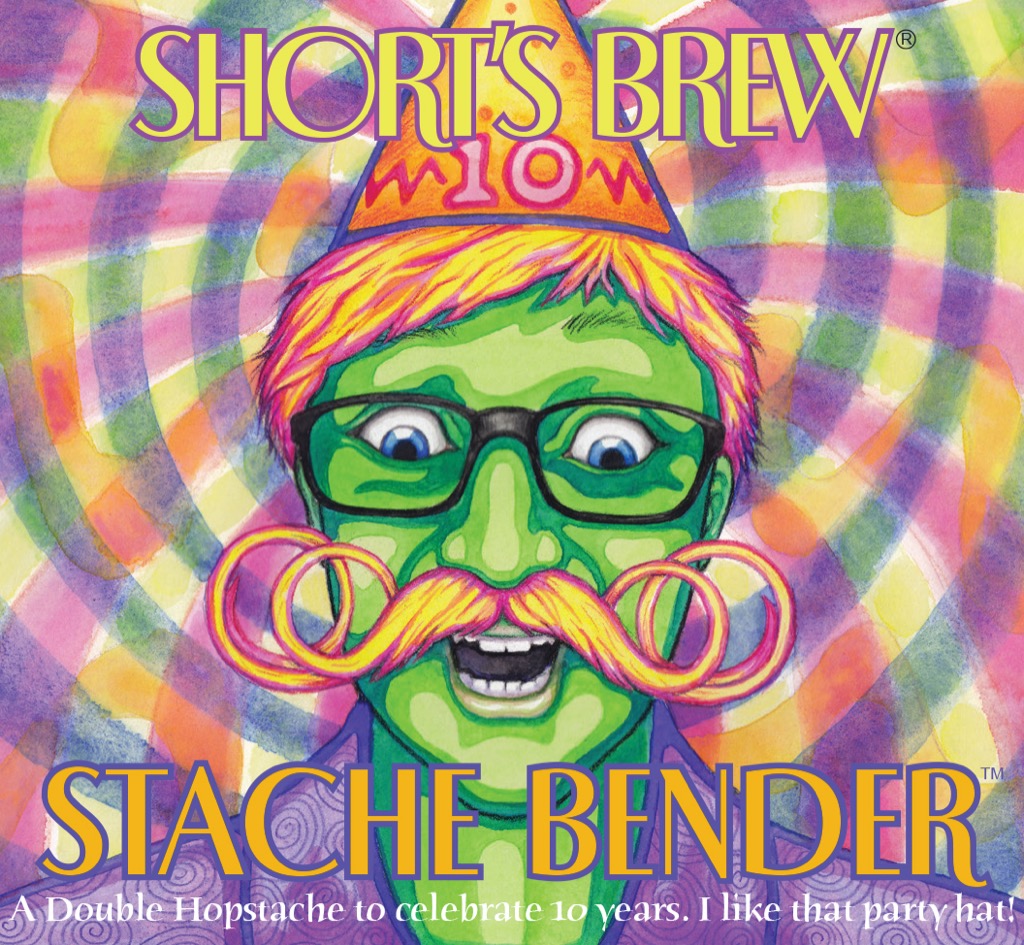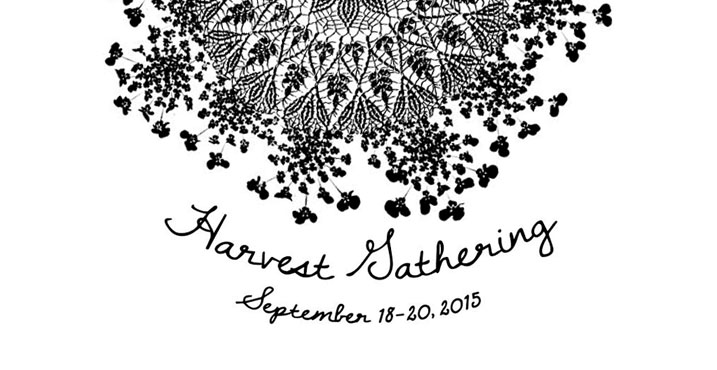For 9 years, Short’s Brewing Company has celebrated our birthday with at least one cask conditioned ale on premise. During one of the very early Short’s Anniversary parties Joe tapped a wooden cask so hard, while simultaneously forgetting to take the peg out of the shive hole, that a rupture of beer sprayed across the pub! Celebrating patrons skurried to the cask, holding their mugs under the waterfall of unfiltered, unpasteurized, yeasty goodness. This year we will make sure to take the peg out, but on Saturday afternoon, look for Joe, hammer in hand, ready to tap a cask in celebration of turning 10! There will be four outrageously awesome cask conditioned ales this weekend to help us ring in year ten: Bourbon Controversius Maximus, Bourbon Aphasia, Stache Bender, and Anniversary Ale.
Short’s has a history of educating our patrons and fans so that they have the best experience ever. Whether that be at the pub sipping beer, at home drinking one of our bottles, or at one of our epic parties, we want every Short’s experience to be memorable, and knowledge enhances the memorability. This is what we call our liberation movement. Since our 10th Anniversary Party is only three days away, we decided today was a wonderful day to sit down with our Head Beer Liberator and chat about Cask Conditioned Ales, or Real Ale, since it will be served up on the streets of Bellaire on April 26th.
What is your name? What do people call you? What do you call yourself?
My name is Jon Wojtowicz. Most people call me Woj. I usually just refer to myself as either Jon or Woj, depending on who it is.
Let’s start with the basics. What is a Cask Ale?
Cask Ale, also known as Real Ale, is the term for unpasteurized, unfiltered beer, that still has live, active yeast in the cask. So the beer is conditioned in, and served from, a cask without additional nitrogen or carbon dioxide. Casks are an age-old method of storing and serving beer.
Does this mean I am drinking live yeasts when I have a Cask Ale?
Well, sorta. Since the yeast still has to be alive and active in the cask, the beer is slowly and continuously fermenting. This keeps the beer fresh and tasty. If the cask is properly handled before it is served, it should be laying on its side and have time for the yeast to settle to the bottom so when served, the majority of the sediment does not travel into your glass but a very small amount of yeast is in every sip.
So what does Cask even mean?
Cask means container. Most casks today are Firkins.
 Are most Casks made out of wood?
Are most Casks made out of wood?
Traditionally yes, and there are still some found today, but now most casks are made out of stainless steel. Stainless steel casks are just more sanitary and let in less oxygen to touch the beer. The more oxygen that touches beer, the faster the beer will go stale. And no one wants to drink beer that tastes like cardboard! Actually, the innovation of metal casks is what led to the invention of the sanke keg in the 1960’s. So the beer industry got a two for one deal.
If a cask isn’t served with additional nitrogen or carbon dioxide, like a keg, then how is it served?
 There are two ways that cask ale is traditionally served, through a tap or a beer engine. Often a tap is knocked directly into the top of the cask. Since the cask is then laid on its side, the beer flows out of the tap by the aid of gravity. If a beer engine is used, the beer is pumped from the cask through a hand actuated device. This type of device is an airtight piston chamber. When someone pulls down on the handle, the piston is raised, which drags up a half pint of beer.
There are two ways that cask ale is traditionally served, through a tap or a beer engine. Often a tap is knocked directly into the top of the cask. Since the cask is then laid on its side, the beer flows out of the tap by the aid of gravity. If a beer engine is used, the beer is pumped from the cask through a hand actuated device. This type of device is an airtight piston chamber. When someone pulls down on the handle, the piston is raised, which drags up a half pint of beer.
I am worried this beer would be quite flat, is that the case?
A cask ale should never be flat. Flat beer is dull, lifeless, and produces no foam. Cask ales are not as strongly carbonated as most commercially brewed and kegged beer, but it does have carbonation. A lot of brewers add a small amount of priming sugar or wort to the cask so the yeast can create carbon dioxide during a secondary fermentation.
If it isn’t as carbonated as most beers, how does the cask process change the beer’s flavor and aroma profile?
Typically they have a creamier, smoother mouthfeel. They also tend to have a palate coating sensation because the lower carbonation does not have the lifting ability to cleanse the palate. Some cask ales are dry hopped to encourage an extremely fresh, floral, and sometimes spicy aroma. The foam of a cask ale is particularly beautiful with its small, densely-packed, persistent bubbles that encourage the esters to woft out of the glass bringing all the pleasant aromas to nose.
Are there certain styles of beer that are better suited to be cask conditioned?
Medium bodied ales and darker, heavier beers in general are best for the cask conditioning process. Beers that would typically be served around 45 degrees like pale ales, extra special bitters, and india pale ales, as well as beers served around 50-55 degrees like stouts and porters are great options for casks.
 What cask ale are you looking forward to trying at the Anniversary party?
What cask ale are you looking forward to trying at the Anniversary party?
Stache Bender. Hands down. But if you are lucky enough to celebrate with us this weekend, I would recommend everyone try at least one, it’s something awesome and different and rare for Short’s.
Cheers!
 Jon, or “Woj,” was originally from the suburbs of Chicago and first started coming to Michigan with his family for summer vacations. Upon graduating high school Jon enrolled in Western Michigan University to pursue a degree in Earth Science Education and Environmental Science. This is where he first met Joe Short through some mutual friends and also tried some of the earliest versions of “Short’s” brew. After graduation Jon decided he wanted to live in Northern Michigan and already had some friends there who happened to be opening a brewery.
Jon, or “Woj,” was originally from the suburbs of Chicago and first started coming to Michigan with his family for summer vacations. Upon graduating high school Jon enrolled in Western Michigan University to pursue a degree in Earth Science Education and Environmental Science. This is where he first met Joe Short through some mutual friends and also tried some of the earliest versions of “Short’s” brew. After graduation Jon decided he wanted to live in Northern Michigan and already had some friends there who happened to be opening a brewery.
Getting established in northern Michigan was not easy, jobs were few and far between, with the most readily available ones being in the hospitality industry. Over the next few years, Jon honed his skills in all aspects of the restaurant industry particularly as a chef. Then in the winter of 2007, Jon was approached by his now good friend Joe about coming to work for him at his brewery.



